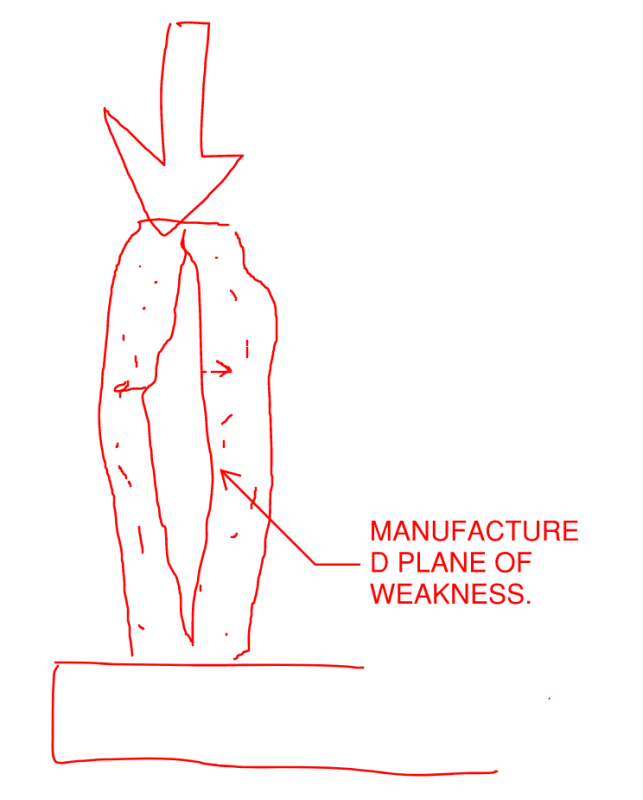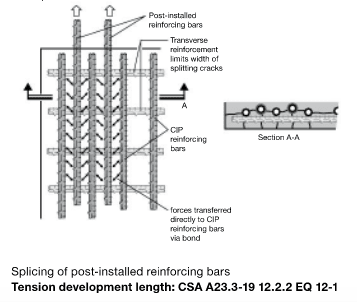Nulukkizdin
Structural
We've got a CMU core that is being used as a major lateral element on our project. Our detail shows a lapped dowel between the CMU wall and a concrete stemwall below. Unfortunately the contractor missed this detail and are looking for a post-installed fix.
Being that the wall reinf is working hard in the CMU walls above, we were working with some heavy (#7) vertical reinf. We'll obviously have a hard time fully developing the strength of the wall vertical reinforcing with an drill/epoxy installation in the top of a 10" concrete wall.
Thinking our solution could potentially lie in one of the following?
[ul]
[li]Unsure if we have the ability to drill/epoxy a "lap" to the vertical reinforcing in the wall below?[/li]
[li]Unsure if we have the ability to core/grout a "lap" to the vertical reinforcing in the wall below?[/li]
[li]Design the drilled/epoxy anchors for the actual design load of the wall reinf above. Ensure concrete wall reinforcing below is sufficient enough to transfer load out of that epoxy failure cone and into the reinforcing?[/li]
[li]Design the epoxy anchors to transfer shear load, install some sort of exterior strap/plate to transfer the tension load (via shear)?[/li]
[/ul]
Any and all thoughts/input would be appreciated!
Being that the wall reinf is working hard in the CMU walls above, we were working with some heavy (#7) vertical reinf. We'll obviously have a hard time fully developing the strength of the wall vertical reinforcing with an drill/epoxy installation in the top of a 10" concrete wall.
Thinking our solution could potentially lie in one of the following?
[ul]
[li]Unsure if we have the ability to drill/epoxy a "lap" to the vertical reinforcing in the wall below?[/li]
[li]Unsure if we have the ability to core/grout a "lap" to the vertical reinforcing in the wall below?[/li]
[li]Design the drilled/epoxy anchors for the actual design load of the wall reinf above. Ensure concrete wall reinforcing below is sufficient enough to transfer load out of that epoxy failure cone and into the reinforcing?[/li]
[li]Design the epoxy anchors to transfer shear load, install some sort of exterior strap/plate to transfer the tension load (via shear)?[/li]
[/ul]
Any and all thoughts/input would be appreciated!


